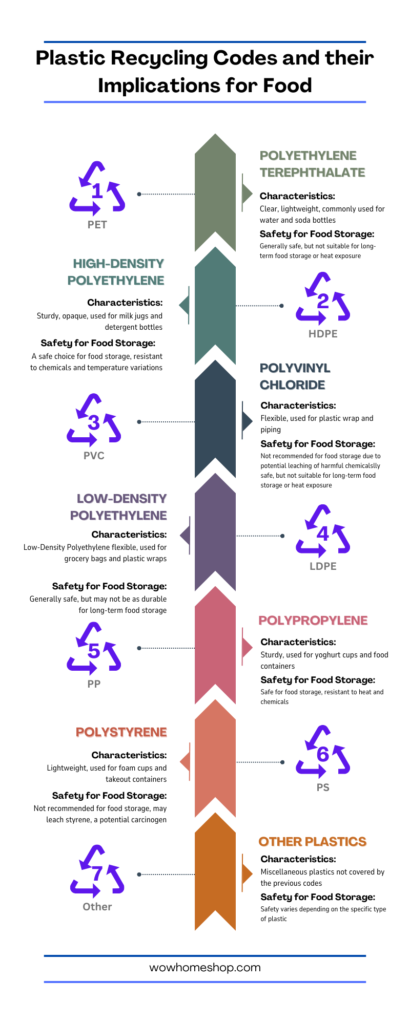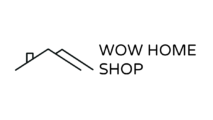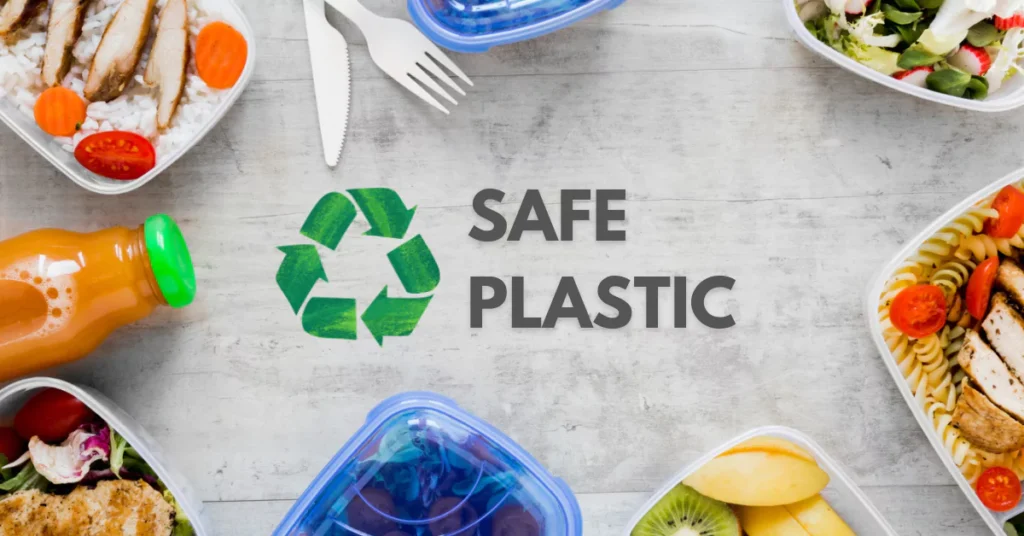Do you ever stop and think about the amount of plastic we use every day, particularly in storing food? Plastic is everywhere, from our leftover containers to the packaging of our favourite snacks. But, did you know that not all plastic is created equal, especially when it comes to protecting our health? It’s important to consider the impact of plastic on our lives and the choices we make daily to ensure our safety.
In this blog, we’re diving deep into the world of safe plastic for food storage. Yep, you heard me right – safe plastic. Because let’s face it, nobody wants to be unknowingly exposing themselves to harmful chemicals while trying to keep their leftovers fresh.
We’ll explore why it’s crucial to opt for containers made from materials that won’t leach toxins into our food. Plus, we’ll unravel the mystery of those little recycling codes you see stamped on the bottom of plastic containers. Trust me, they’re more than just random numbers – they’re your key to identifying which plastics are safe for storing your favourite meals.
Get ready, because after reading this, you’ll know which plastics are best for storing your food. Let’s begin!
What Exactly Makes a Plastic Food Grade?
Food-grade plastics are formulated with materials that are deemed safe for contact with food. This means they do not contain harmful chemicals or additives that could leach into your food and potentially cause health issues. Instead, they are made from materials that have been thoroughly tested and approved for use in food packaging.
Well, think about it this way: when you store food in plastic containers, there’s a chance that some of the chemicals from the plastic could transfer into your food. This is especially true if the plastic is not designed specifically for food storage. By using food-grade plastics, you can minimize this risk and ensure that your food stays safe to eat.
To understand which plastics are suitable for you, you need to know the plastic recycling code.
What are Plastic Recycling Codes?
To determine safe plastic for food storage, understanding plastic recycling codes is crucial. You’ve probably noticed those little symbols—a triangle with a number inside—on the bottom of plastic containers. They may seem insignificant, but they tell us a lot about the type of plastic and its safety for food storage.
Recycling symbols are more than just decoration; they play a vital role in identifying the type of plastic used in a container. Each number inside the triangle corresponds to a specific resin type, ranging from 1 to 7. These codes help consumers and recycling facilities sort and process plastics more efficiently.
Let’s take a closer look at the most common recycling codes and what they generally represent:
PET (Polyethylene Terephthalate):
This type of plastic is commonly used for water bottles, soft drink bottles, and food packaging. It’s generally considered safe for single-use food storage but may not be suitable for long-term storage or heating.
HDPE (High-Density Polyethylene):
HDPE is a robust and versatile plastic often used for milk jugs, detergent bottles, and grocery bags. It’s one of the safest options for food storage, as it’s resistant to chemicals and doesn’t leach harmful substances into food.
PVC (Polyvinyl Chloride):
PVC is used in a variety of applications, including pipes, flooring, and some food packaging. However, it’s not recommended for food storage due to potential leaching of harmful chemicals.
LDPE (Low-Density Polyethylene):
LDPE is flexible and commonly used for plastic bags, squeeze bottles, and food wraps. It’s generally considered safe for food storage, especially for items like bread or produce.
PP (Polypropylene):
PP is used in food containers, yoghurt cups, and medicine bottles. It’s considered safe for food storage and can withstand high temperatures, making it suitable for microwave use.
PS (Polystyrene):
PS is used in disposable cups, takeout containers, and packing peanuts. It’s not recommended for food storage, especially when exposed to heat, as it can release potentially harmful chemicals.
Other:
This category includes various types of plastics not covered by the previous codes. It’s essential to check the specific type of plastic and its safety for food storage before using it.


Types of Plastic
Understanding the various types of plastic used for food storage is crucial when selecting the appropriate containers.
PET (Polyethylene Terephthalate) – Recycling code 1 (PETE)
PET is ubiquitous in our daily lives, found in water bottles, soda bottles, and certain food containers. While generally safe for single use, it’s not ideal for repeated use or exposure to heat. This plastic is prone to leaching chemicals over time, especially when subjected to high temperatures.
HDPE (High-Density Polyethylene) – Recycling code 2
HDPE is a reliable choice for food storage due to its durability and resistance to leaching chemicals. You’ll find it in milk jugs, juice containers, and various storage containers. Its robust nature makes it suitable for both cold and hot food storage, making it one of the safest options available.
PVC (Polyvinyl Chloride) – Recycling code 3
Avoid using PVC for food storage whenever possible. This plastic, commonly found in cling wraps and certain food packaging, can leach harmful chemicals like BPA and phthalates. Look out for uPVC (unplasticized PVC) as a potentially safer alternative, although it’s not commonly used in food packaging.
LDPE (Low-Density Polyethylene) – Recycling code 4
LDPE is prevalent in bread bags, grocery bags, and some food wraps. While generally safe for cold storage, it’s not recommended for hot foods due to its low melting point. Be cautious when using LDPE containers for storing leftovers or reheating food.
PP (Polypropylene) – Recycling code 5
Polypropylene is a versatile plastic often found in reusable containers, yoghurt tubs, and bottle caps. It’s considered safe for most food storage applications, offering a good balance of durability and safety.
Other Plastics (PS, PC)
Other plastics, such as PS (Polystyrene) and PC (Polycarbonate), are less commonly used in food storage but may still be encountered. It’s crucial to check for “food-grade” labelling when using these plastics, as they may contain additives or chemicals unsuitable for storing food.
Safest Plastics for Food Storage
Selecting the appropriate type of plastic container is essential for ensuring the safe storage of food. Among the various options available, HDPE (High-Density Polyethylene) and PP (Polypropylene) are considered the top choices to maintain the freshness and purity of food.
Let’s delve into why HDPE and PP are the go-to plastics for food storage.
HDPE (High-Density Polyethylene), marked with recycling code 2, is renowned for its durability and resistance to chemicals. This type of plastic is commonly used in food-grade containers, including milk jugs, juice bottles, and food storage containers. HDPE is known for its non-leaching properties, meaning it won’t release harmful chemicals into your food, even when exposed to varying temperatures. Its sturdy construction also makes it suitable for freezing food without the risk of cracking or warping.
PP (Polypropylene), identified by recycling code 5, is another excellent choice for food storage containers. PP is highly resistant to heat and moisture, making it ideal for storing both hot and cold foods. It’s commonly used in microwave-safe containers and reusable food storage products. Like HDPE, PP is considered food-safe and does not leach harmful chemicals into food, ensuring the safety of your stored items.
Both HDPE and PP offer peace of mind when it comes to food storage. Their inert nature means they won’t react with the food stored inside, preserving its flavour and quality. Additionally, these plastics are easy to clean and maintain, making them a convenient choice for everyday use in the kitchen.
Additional Factors for Safe Food Storage
When it comes to keeping our food safe and fresh, the type of containers we use matters more than we might realize. That’s why it’s crucial to pay attention to additional factors beyond just choosing any plastic container. Here are some key considerations to ensure you’re storing your food in the safest possible way.
Importance of Choosing Food-Grade Containers
First and foremost, it’s essential to select containers that are explicitly labelled as food-grade. These containers are designed to meet strict standards set by the FDA (Food and Drug Administration) to ensure they are safe for storing food. By opting for food-grade containers, you can have peace of mind knowing that they have been rigorously tested for harmful chemicals and are suitable for storing consumables.
Look for “BPA-Free” Labels
One crucial label to keep an eye out for is “BPA-free” (Bisphenol A). BPA is a chemical often found in plastics that can leach into food and beverages, posing potential health risks. Choosing containers labelled as BPA-free adds an extra layer of safety, as it minimizes exposure to this potentially harmful substance.
Recommendations for Proper Use
Even with the right type of plastic containers, it’s essential to use them correctly to maintain food safety. Here are some recommendations:
- Avoid Microwaving Containers Unless Marked Safe: Not all plastic containers are suitable for use in the microwave. Look for containers specifically labelled as microwave-safe to prevent potential chemical leaching.
- Be Cautious with Hot or Greasy Foods: Certain plastics may not withstand high temperatures or exposure to oily or greasy foods. To avoid potential contamination, refrain from storing hot foods or liquids in containers not designed for such use.
- Replace Damaged Containers: Over time, plastic containers can become scratched or damaged, increasing the risk of chemicals leaching into food. Be sure to regularly inspect your containers and replace any that show signs of wear and tear.
Alternatives to Plastic Food Storage
When it comes to safe plastic for food storage, it’s essential to explore alternatives beyond traditional plastic containers. While plastics like HDPE and LDPE are considered safe for food storage, some individuals prefer alternatives due to sustainability concerns or personal preferences. Let’s delve into some popular options:
Glass Containers: Glass containers are a fantastic alternative to plastic for food storage. They are non-toxic, nonporous, and won’t leach harmful chemicals into your food. Plus, glass is inert, meaning it won’t react with acidic or oily foods, preserving their taste and quality. Additionally, glass containers are durable, dishwasher-safe, and recyclable, making them an eco-friendly choice for storing leftovers and meal prepping.
Stainless Steel Containers: Stainless steel containers are another excellent option for those looking to steer clear of plastic. They are non-reactive and won’t impart any flavours or odours to your food. Stainless steel is also incredibly durable, resistant to corrosion, and easy to clean. These containers are perfect for packing lunches, storing snacks, or even freezing leftovers. Plus, many stainless steel containers are designed with leak-proof lids, making them ideal for transporting soups, sauces, and other liquids.
Ceramic Containers: Ceramic containers offer a charming and eco-friendly alternative to plastic. They come in a variety of shapes, sizes, and designs, adding a touch of elegance to your kitchen storage. Ceramic is non-toxic and inert, so it won’t interact with your food in any way. These containers are microwave and oven-safe, allowing you to reheat leftovers directly in the container without worrying about harmful chemicals leaching into your food.
Wrapping Up
When it comes to safe plastic for food storage, HDPE, LDPE, and PET stand out as the top choices. These plastics are designed to maintain food safety and quality, providing peace of mind for consumers. By making informed choices and selecting containers labelled as food-grade and food-safe, we can ensure the well-being of ourselves and our loved ones. However, it’s also crucial to practice responsible plastic use, including proper recycling and disposal methods, to minimize environmental impact. Let’s prioritize safety, quality, and sustainability in our food storage practices for a healthier future.







![Freshware [60 Pack] 8, 16, 32 oz, 20 sets each size Food Storage Containers with Lids, Plastic Deli Containers, Meal Prep Containers, Microwave and Freezer Safe, Stackable, Leakproof, BPA Free, Clear](https://m.media-amazon.com/images/I/71KsFwXRY7L._SS520_.jpg)




Pingback: What is BPA-free? Our Best Food Containers Picks! - Wow Home Shop
Pingback: Plastic, Glass, Metal or Stackable: Which Pantry Container Fits Your Needs? - Wow Home Shop
Pingback: Kitchen Must-Have Best Food Storage Containers Brands - Wow Home Shop